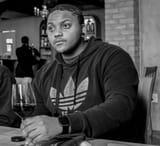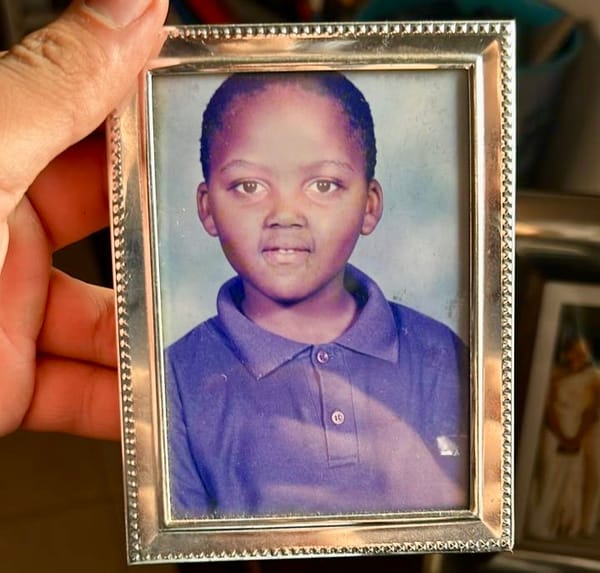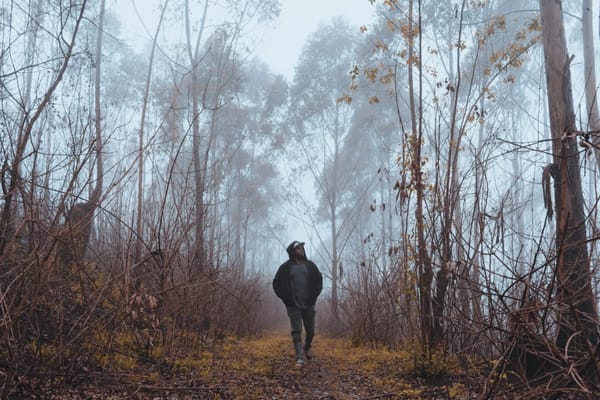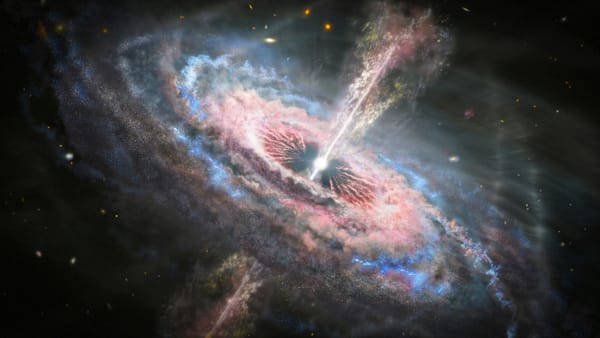Villains, Shadows, and My Story: The Crossroads
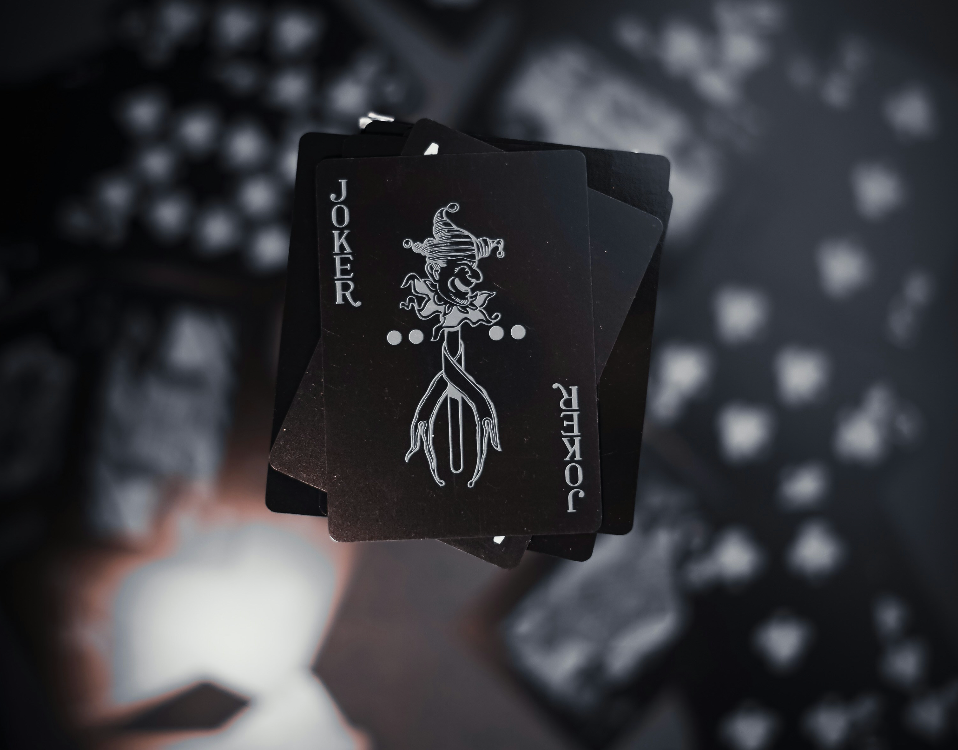
I’ve reached a point where I feel like any further character development would turn me into a villain in my own story, a while ago, and yet my character keeps evolving.
Naturally, this makes me feel like I’m already in my villain arc, but I’m challenged by the whole morality of stepping off the hero’s path.
At first glance, that sounds like a bad thing, but is it?
Villain (noun) — “a person, real or fictional, who deliberately does harm or wrongdoing, especially in opposition to the protagonist or accepted moral order; in narratives, the chief evil character whose actions drive conflict.” Etymology: from Middle English vilain (“serf, farmhand”) via Old French, from Medieval Latin villānus (“worker of a villa”), later evolving to denote a “wicked or malicious person.”
With this understanding of what a villain is, it’s easy to see where the whole good versus evil, light versus dark, hero versus villain archetypes come from.
Humanity’s oldest myth is not the story of gods or creation — it is the story of conflict.
Every culture, in one form or another, tells the story of light and dark, order and chaos, good and evil, and hero and villain. Yet these are not opposites in the mathematical sense. They are reflections — twin mirrors facing each other across the infinite corridor of moral perception.
The very existence of “good” depends on its contrast with what we call “wrong.”
Without shadow, light becomes invisible.
Without friction, virtue remains untested.
The binary exists not because the universe is divided, but because consciousness is — because to know one’s self, one must define what one is not (Jung, 1959).
That, in and of itself, forces the question: “Who am I?”
Or more specifically, “Who am I not?”
What parts of myself am I denying?
What parts do I refuse to see or uncover?
What’s my light and dark?
Plato viewed light as the realm of truth and darkness as ignorance, but even he acknowledged that the philosopher must descend back into the cave to guide others toward enlightenment (Plato, trans. 2007). Jung later wrote that man cannot become whole until he integrates his shadow — that the very traits we repress or condemn are the same forces that grant us vitality, creativity, and will (Jung, 1959). What we exile as “dark” does not vanish; it matures underground, gathering strength, waiting for its chance to return — either as wisdom or destruction.
As a person who’s spent my life avoiding and suppressing parts of myself, I can tell you with almost absolute certainty that nothing we suppress that much comes back as wisdom. The best-case scenario is that it returns in times of crisis as a trauma response — and when has a trauma response not left destruction in its wake?
My earliest “villain seeds” were planted long before I could articulate them. I learned, often violently, that the world rewards compliance and punishes authenticity. I was told to shrink, to soften, to acquiesce. Every time I obeyed, I felt invisible. Every time I spoke, I was silenced. This history of being made small is a part of my villain origin story.
That then leads us to morality.
Are trauma responses wrong?
On one hand, bleeding on people who didn’t cut you — problem.
However, would you be bleeding if they didn’t pull the trigger?
Morality, then, is not a constant. It bends to context, perspective, and time. One era’s hero becomes another’s oppressor; one nation’s liberator becomes its neighbour’s villain.
Nietzsche rejected the simplicity of “good versus evil” altogether, urging humanity to evolve beyond the moral binaries imposed by religion and fear — to create values rather than inherit them (Nietzsche, 1887). In that light, what we call “wrong” is often just unapproved power — power not yet reconciled with collective comfort (Campbell, 1949).
The hero and the villain are just embodiments of this tension. They are not enemies so much as extensions of the same will.
Take, for example, Lex Luthor from All-Star Superman and Gods and Monsters.
His genius is undeniable, his moral compass uncompromising, and yet he pursues goals that the world labels “evil.”
Why?
Because he refuses to shrink to fit their narrative.
He is unapologetically self-aligned.
Similarly, Thanos’ genocidal path is rooted in a profoundly utilitarian vision — one that challenges the heroes to confront the limits of their ethics. And Harley Quinn, chaotic and unapologetic, refuses a world that underestimated her intelligence and will.
But my favourite villain — perhaps of all time — is The Joker.
And it’s ironic because I hate clowns.
They’ve always freaked the fuck out of me.
Yet, for reasons I can’t easily explain, The Joker feels like home.
Specifically, Heath Ledger’s and Joaquin Phoenix’s portrayals — both so human it hurts.
No superpowers,
no divine destiny…
just a man broken so profoundly by apathy, rejection, and cruelty that he turns his pain into performance.
He isn’t special because he’s strong — he’s special because he’s aware.
There’s a theory that Ledger’s Joker isn’t actually powerless, that his “power” is hyperawareness — the ability to see through the illusion.
He knows he’s a construct,
a story, a comic,
a joke.
He knows none of it matters.
That awareness frees him from every chain that binds the rest of us.
Society’s rules? Arbitrary.
Morality? Mutable.
Fear? Optional.
That’s why he laughs — not because he’s insane, but because he understands what nobody else does.
He understands that “madness” is just the word we use for honesty in a world addicted to denial.
That chaos is the natural order, and control is the illusion.
“What is schizophrenia but a state where what’s in here doesn’t match what’s out there?” (Six Degrees of Separation, 1993)
And maybe, in some small way, that resonates because I’ve been there — stripped of illusion, scorched by truth, watching the world reward bullshit performances and hypocrisy, while punishing authenticity.
Maybe I relate because The Joker’s madness isn’t insanity — it’s clarity.
The Joker’s entire philosophy revolves around breaking the illusion of morality. He doesn’t seek power or wealth or fame — only revelation. His chaos exposes fragility. He’s not trying to destroy Gotham; he’s trying to wake it up.
And in that, he becomes the truest kind of villain — one who mirrors the sickness of the world back to itself.
He’s also the perfect symbol of what it means to become the villain:
Because sometimes doing what’s necessary — for yourself, your truth, your evolution — will make you the bad guy in someone else’s story.
The Joker embraces that.
He does not seek redemption or validation; he seeks alignment.
His chaos, however brutal, is consistent with his truth.
Heath Ledger’s Joker tells Batman: “You complete me.”
Because he knows — the hero and the villain are reflections. They define each other. Without the villain, the hero is untested. Without the hero, the villain is unchallenged.
That tension is where growth lives.
And maybe, that’s exactly what this crossroads is for me.
The hero’s path is noble — disciplined, morally righteous, and externally validated. It relies on being “seen” and “approved” by the world. Yet it comes at the cost of self-negation. Every compromise chips away at authenticity. Every act to appease leaves a shadow where potential could have flourished.
The villain’s path is dangerous, perhaps “wrong” in the eyes of society. It risks alienation, criticism, and misunderstanding. Yet it is raw, alive, and authentic. To embrace it is to take the power I’ve been denied. To act on conviction rather than consent. To say “fuck it, we ball” — and honour my own compass unapologetically.
Being the villain is not about cruelty.
It is about alignment with self over the comfort of others. It is about prioritising the evolution of my own mind, spirit, and craft. It is about acting on principle when compliance would feel like betrayal.
Like The Joker, the villain laughs not because it’s funny —
but because they finally understand.
They understand that freedom costs misunderstanding.
That authenticity costs approval.
That peace, the real kind, demands war with falsehood.
So maybe that’s what becoming the villain really means — finally refusing to apologise for existing as you are.
Because if the price of truth is being seen as “bad,” maybe that’s a bargain worth making.
And maybe — just maybe — it’s time to stop asking for permission,
and start building the kind of chaos that sets me free.
The Joker is not the only one who embodies this paradox — this collision of shadow and light, chaos and control, creation and destruction. Across stories, mythologies, and modern media, other villains — and even heroes — have wrestled with the same question: What does it mean to do the wrong thing for the right reason?
Each of them mirrors a different fragment of the human psyche — pride, vengeance, grief, ambition, freedom, or love twisted by circumstance.
They are proof that villainy isn’t always born of evil, but of alignment, and that heroism isn’t always good — sometimes, it’s just obedience.
Don’t get me wrong, I’m not advocating for complete anarchy,
though I’m not exactly saying it’s not necessary…
I only mean to voice my personal dilemma:
The worst parts of myself, the parts I bury deep in my subconscious, came into existence at a time when a child needed an advocate or a guardian to intervene and found nothing but snakes, vultures and indifference.
To this day, those parts exist in partial exile in the back of my mind. Silent, but not asleep – ready to take charge and protect that child whenever they're threatened.
Who then do we judge and condemn?
The silent protector who creates safety at any cost – regardless of how fierce, exacting, and likely to leave casualties.
or...
Whoever/whatever made the protector show their strength?
OR...
Is it all some grey space where neither is wrong nor right – they just are.
The Joker is not the only one who embodies this paradox —
this collision of shadow and light,
chaos and control,
creation and destruction.
Across myth and modernity, across scripture and screen,
we see the same tension replayed —
the wrong thing done for the right reason.
Each villain, each hero, is a mirror —
a fragment of our collective psyche,
reflecting the unspoken truth:
Villainy isn’t always evil, and heroism isn’t always good.
Sometimes, heroism is just obedience.
Sometimes, villainy is simply freedom.
Below is a brief exploration of thirty characters who each, in their own way, dance on that edge between light and dark:
1. The Joker (DC Comics) — Chaos incarnate; a mirror to society’s hypocrisy. His madness is awareness — rebellion dressed as laughter.
2. Dracula (Bram Stoker / Luke Evans / Castlevania) — Love corrupted by eternity; the cost of defying death.
3. Eren Yeager (Attack on Titan) — Freedom weaponised; the boy who became the monster to end the cycle of monsters.
4. Walter White (Breaking Bad) — Pride turned prophecy; a man who mistook survival for destiny.
5. Thanos (Marvel) — Order by annihilation; conviction untempered by mercy.
6. Voldemort (Harry Potter) — The orphan who feared death more than he loved life.
7. Magneto (X-Men) — Trauma transfigured into revolution; the saviour branded as tyrant.
8. Harley Quinn (DC Comics) — Liberation masked as lunacy; tenderness weaponised.
9. Killmonger (Black Panther) — Justice through vengeance; rage justified by history.
10. Loki (Norse Myth / Marvel) — Trickster of fate; the intellect that refuses its leash.
11. Light Yagami (Death Note) — The mathematician of morality; a god built from hubris.
12. V (V for Vendetta) — Anarchist saint; pain distilled into principle.
13. Anakin Skywalker / Darth Vader (Star Wars) — The fallen angel; love decayed into control.
14. Scar (The Lion King) — The overlooked genius; brilliance embittered by exclusion.
15. Sauron (The Lord of the Rings) — Domination as order; the tyranny of certainty.
16. The Green Goblin (Spider-Man) — Duality incarnate; ambition split against itself.
17. Venom (Marvel) — Hunger with conscience; monstrosity in negotiation.
18. Hannibal Lecter (Silence of the Lambs) — The aesthete predator; refinement stripped of empathy.
19. Lex Luthor (DC Comics) — The mortal rival to godhood; jealousy rebranded as justice.
20. Severus Snape (Harry Potter) — The antihero in mourning; love expressed through cruelty.
21. Maleficent (Sleeping Beauty / Jolie) — Betrayal reborn as grace; vengeance redefined as protection.
22. Ra’s al Ghul (Batman) — Ecological balance through selective extinction; the philosopher of ruin.
23. Doctor Octopus (Spider-Man) — Intellect unchained from ethics; the tragedy of genius.
24. Hades (Greek Myth / Disney) — The cynic of Olympus; bitterness forged by exile.
25. Kylo Ren (Star Wars) — The fractured heir; worshipping the shadow of legacy.
26. Homelander (The Boys) — Heroism hollowed by narcissism; godhood without godliness.
27. Ozymandias (Watchmen) — The saviour-statistician; genocide as geometry.
28. Rick Sanchez (Rick and Morty) — Nihilist oracle; apathy as enlightenment.
29. Evil Morty (Rick and Morty) — The pawn who broke the board; freedom through disillusionment.
30. Megamind (DreamWorks) — The miscast villain; proof that identity is a choice, not a sentence.
Each of these figures carries a different fragment of the same truth:
That villainy is not the absence of goodness — it is the moment goodness stops asking for permission.
That darkness is not corruption — it is the womb from which clarity is born.
They remind us that creation itself begins in rebellion.
That the stars are only visible against the night sky.
And so perhaps the time comes — for every artist, every seeker, every soul standing at the crossroads to ask:
“What if I am not the hero? What if I was never meant to be?”
Because maybe,
just maybe…
The villain was the one evolving all along.
Which then leaves one question:
“Do I even have what it takes to be a villain?”
To live that authentically.
To not just remove the veil, but completely obliterate it.
To be: The Joker.
References
- Booker, C. (2004). The Seven Basic Plots: Why We Tell Stories. London: Continuum.
- Campbell, J. (1949) The Hero with a Thousand Faces. Princeton, NJ: Princeton University Press.
- Eliade, M. (1963) Myth and Reality. New York: Harper & Row.
- Jung, C. G. (1959) Aion: Researches into the Phenomenology of the Self. Princeton, NJ: Princeton University Press.
- Nietzsche, F. (1887) On the Genealogy of Morality. Translated by W. Kaufmann. New York: Vintage Books, 1967.
- Plato (2007) The Republic. Translated by B. Jowett. Mineola, NY: Dover Publications.
- Zipes, J. (2001). Sticks and Stones: The Troublesome Success of Children’s Literature from Slovenly Peter to Harry Potter. New York: Routledge.
- Shelley, M. (1818) Frankenstein; or, The Modern Prometheus. London: Lackington, Hughes, Harding, Mavor & Jones.
DC Universe
• The Dark Knight (2008) Directed by Christopher Nolan. Warner Bros. Pictures.
• Joker (2019) Directed by Todd Phillips. Warner Bros. Pictures.
• All-Star Superman (2011) Directed by Sam Liu. Warner Bros. Animation.
• Batman v Superman: Dawn of Justice (2016) Directed by Zack Snyder. Warner Bros. Pictures.
• Suicide Squad (2016) Directed by David Ayer. Warner Bros. Pictures.
• Man of Steel (2013) Directed by Zack Snyder. Warner Bros. Pictures.
• Batman Begins (2005) Directed by Christopher Nolan. Warner Bros. Pictures.
• Ra’s al Ghul character, DC Comics. Created by Dennis O’Neil and Neal Adams, Batman #232 (1971).
• Lex Luthor character, DC Comics. Created by Jerry Siegel and Joe Shuster, Action Comics #23 (1940).
Marvel Universe
• Avengers: Infinity War (2018) Directed by Anthony and Joe Russo. Marvel Studios.
• Black Panther (2018) Directed by Ryan Coogler. Marvel Studios.
• Iron Man (2008) Directed by Jon Favreau. Marvel Studios.
• Spider-Man (2002) Directed by Sam Raimi. Columbia Pictures.
• Venom (2018) Directed by Ruben Fleischer. Columbia Pictures.
• Doctor Strange (2016) Directed by Scott Derrickson. Marvel Studios.
• Loki (2021–) Created by Michael Waldron. Disney+.
Anime & Japanese Media
• Attack on Titan (2013–2023) Created by Hajime Isayama. Wit Studio / MAPPA.
• Death Note (2006–2007) Created by Tsugumi Ohba and Takeshi Obata. Madhouse.
• Naruto (2002–2017) Created by Masashi Kishimoto. Studio Pierrot.
• Dragon Ball Z (1989–1996) Created by Akira Toriyama. Toei Animation.
• My Hero Academia (2016–) Created by Kōhei Horikoshi. Bones.
• Steins;Gate (2011) Developed by 5pb. and Nitroplus. White Fox.
Animation / Film
• The Lion King (1994) Directed by Roger Allers and Rob Minkoff. Walt Disney Pictures.
• Hades (Disney’s Hercules, 1997) Directed by Ron Clements and John Musker. Walt Disney Pictures.
• Megamind (2010) Directed by Tom McGrath. DreamWorks Animation.
Fantasy & Literature
• Tolkien, J. R. R. (1954–1955) The Lord of the Rings. London: George Allen & Unwin.
• Harry Potter film series (2001–2011) Based on J. K. Rowling’s novels. Warner Bros. Pictures.
• Dracula Untold (2014) Directed by Gary Shore. Universal Pictures.
• Castlevania (2017–2021) Created by Warren Ellis. Netflix.
• Stoker, B. (1897) Dracula. London: Archibald Constable and Company.
Movies/TV
• Breaking Bad (2008–2013) Created by Vince Gilligan. AMC.
• The Boys (2019–) Created by Eric Kripke. Amazon Prime Video.
• Watchmen (2009) Directed by Zack Snyder. Warner Bros. Pictures.
• V for Vendetta (2005) Directed by James McTeigue. Warner Bros. Pictures.
• Rick and Morty (2013–) Created by Dan Harmon and Justin Roiland. Adult Swim.
• Silence of the Lambs (1991) Directed by Jonathan Demme. Orion Pictures.
Disclaimer:
Straight-up, I used AI to assist with this one.
Grammarly for spellcheck and ChatGPT to source my references, because half of the things I referenced, I only remembered the theory, character, or story, but not really where I heard or found that information before.
